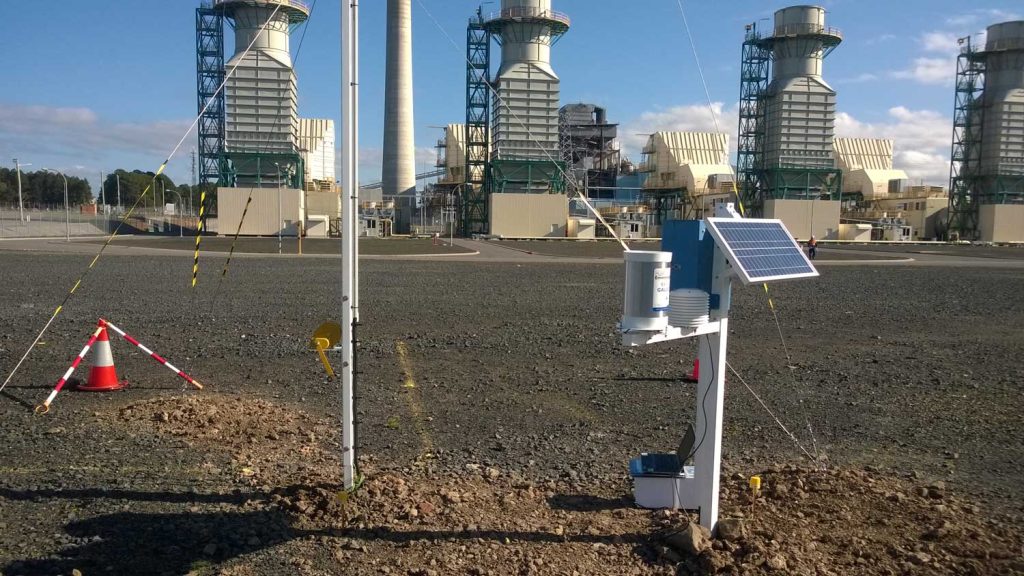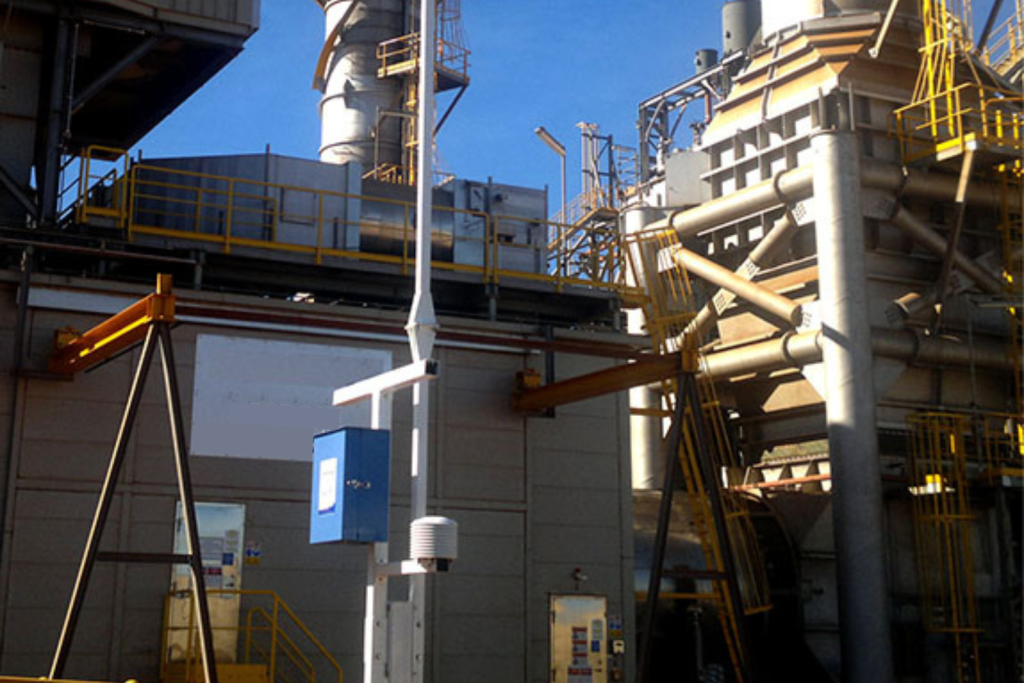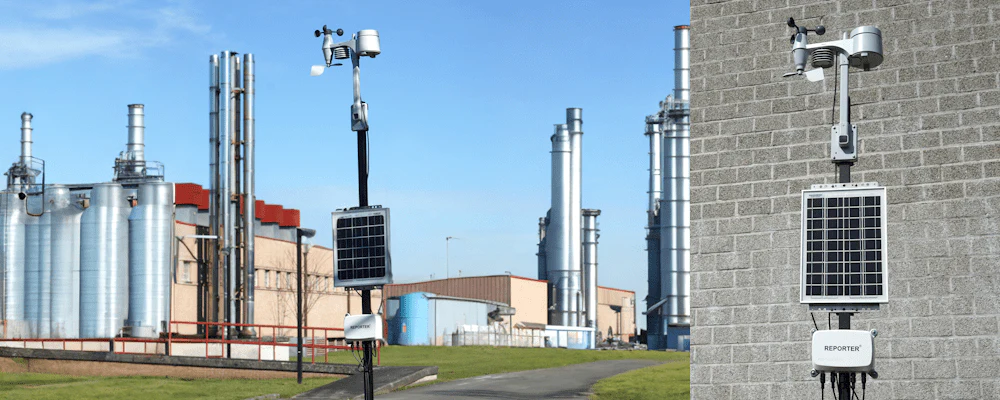Securing Industry: The Role of Weather Station in Factory and Power Plant Safety
Ensuring the safety of factories and power plants is a multifaceted challenge that requires a keen understanding of various external factors, with weather being a significant player. The unpredictable nature of weather conditions can have profound implications for industrial operations, making it imperative for these facilities to deploy sophisticated tools for continuous monitoring. Among these tools, weather stations emerge as indispensable assets, playing a pivotal role in enhancing safety measures and operational efficiency.
Understanding the Basics of Weather Stations

Defining a Weather Station
At its core, a weather station functions as a sophisticated weather detective. It gathers essential data about atmospheric conditions, comprehensive temperature, humidity, wind speed, and rainstorms. While these devices come in diverse shapes and sizes, their primary objective remains consistent: to provide real-time information about the ever-changing weather.
Core Components Unveiled
- Temperature Sensors: Crucial for monitoring ambient temperatures, aiding industries in optimizing processes based on environmental conditions.
- Humidity Sensors: Monitor moisture levels in the air, preventing equipment decomposition and mitigating the risk of plant growth.
- Anemometers: Gauge wind speed, offering insights into potential risks for industries susceptible to wind-related accidents.
- Barometers: Track air pressure, providing valuable data for predicting weather changes and potential safety hazards.
- Rain Gauges: Measure precipitation levels, supplying critical information about potential flooding risks.
The Impact of Weather on Industrial Operations

Temperature Extremes
Factories and power plants house an array of sensitive machinery and equipment, the efficiency and lifespan of which can be negatively affected by extreme temperatures. The real-time data provided by the weather station enables swift responses to temperature fluctuations, preventing costly damages and ensuring optimal working conditions.
Wind Speed and Direction
Industries that rely on towering structures, such as power plants, are particularly ready for high wind speeds. Weather stations equipped with anemometers play a crucial role in monitoring wind conditions, allowing for the adjustment or halting of operations when necessary to prevent accidents and safeguard people.
Humidity and Corrosion
Excessive humidity can lead to the corrosion of machinery, potentially causing malfunctions or breakdowns. Weather stations equipped with humidity sensors assist industries in implementing preventive measures, ultimately extending the life of their equipment and reducing maintenance costs.
Precipitation and Flood Risks
Power plants and factories, often situated in low-lying areas, face the risk of flooding during heavy rainfall. Rain gauges incorporated into weather stations contribute significantly to predicting and preparing for potential flooding events. This proactive approach helps in averting damage to assets and ensures the safety of employees.
Real-World Applications
Predictive Maintenance
One of the key advantages of weather stations lies in their ability to facilitate predictive maintenance. By analyzing weather data, businesses can schedule maintenance activities strategically, reducing downtime and minimizing the risk of unexpected equipment failures. This predictive approach not only enhances safety but also contributes to significant cost savings.
Emergency Preparedness
In the face of extreme weather events, timely information is critical for effective emergency preparedness. It plays a pivotal role by providing accurate and up-to-date data, enabling industries to make informed decisions promptly. This proactive approach ensures the safety of personnel and minimizes the impact of unforeseen events on industrial operations.
Regulatory Compliance
Many industries operate within specific environmental regulations, and adherence to these standards is non-negotiable. Weather stations contribute to regulatory compliance by providing accurate data that can be utilized to demonstrate adherence to safety standards and environmental guidelines. This not only ensures legal compliance but also enhances the reputation of industries as responsible corporate citizens.
The Future of Weather Station Technology

As technology continues to advance, the capabilities of weather stations are poised to evolve as well. Integration with artificial intelligence (AI) and the Internet of Things (IoT) is unlocking new possibilities, allowing for more sophisticated monitoring and predictive analysis. The marriage of weather station data with AI algorithms enables industries to glean deeper insights into weather patterns, empowering them to make more informed decisions regarding safety protocols and operational adjustments.
Weather Stations and Technological Integration
Artificial Intelligence (AI)
The incorporation of AI into weather stations brings a paradigm shift in how industries can leverage weather data. AI algorithms can analyze vast datasets in real-time, providing more accurate predictions and enabling proactive decision-making. For instance, machine learning algorithms can learn from historical weather patterns and provide insights into potential risks, allowing industries to implement preemptive measures.
Internet of Things (IoT)
The synergy between weather stations and IoT opens up new avenues for data collection and communication. IoT-enabled weather stations can transmit data seamlessly to central control systems, facilitating a rapid response to changing conditions. This interconnectedness enhances the overall resilience of industrial operations, as real-time data can be accessed remotely, enabling timely decision-making even in geographically dispersed facilities.
Sensor Advancements
Ongoing advancements in sensor technology contribute to the accuracy and reliability of weather station data. Miniaturized, high-precision sensors are becoming more accessible, allowing for the deployment of compact and cost-effective weather stations. These advancements democratize access to weather monitoring capabilities, enabling even smaller industries to benefit from real-time weather data.
The Role of Weather Stations in Sustainability
Weather station safe key not only contributes to safety and operational efficiency but also plays a vital role in sustainable practices within industries. By optimizing processes based on weather conditions, industries can reduce energy consumption, minimize environmental impact, and improve overall resource efficiency. The integration of weather data into sustainability initiatives aligns industrial practices with environmental stewardship, fostering a more responsible approach to production.
Conclusion:
In the intricate dance between industries and the environment, they emerge as unsung heroes, silently working to ensure the safety and efficiency of factories and power plants. By harnessing the power of these unassuming devices, industries can navigate the unpredictable nature of weather with confidence, securing a brighter and safer future for all.
As technology continues to propel the capabilities of weather stations forward, the symbiotic relationship between industries and these devices is poised to deepen. The integration of AI, IoT, and advancements in sensor technology heralds a new era where weather stations not only serve as vigilant guardians of safety but also as proactive partners in optimizing industrial processes and fostering sustainability. As industries embrace these innovations, they pave the way for a future where the impact of weather on operations is not just managed but transformed into a strategic advantage. The journey towards a safer, more efficient, and sustainable industrial landscape is charted by the unassuming yet powerful weather stations, standing as sentinels in the ever-changing environmental landscape.

